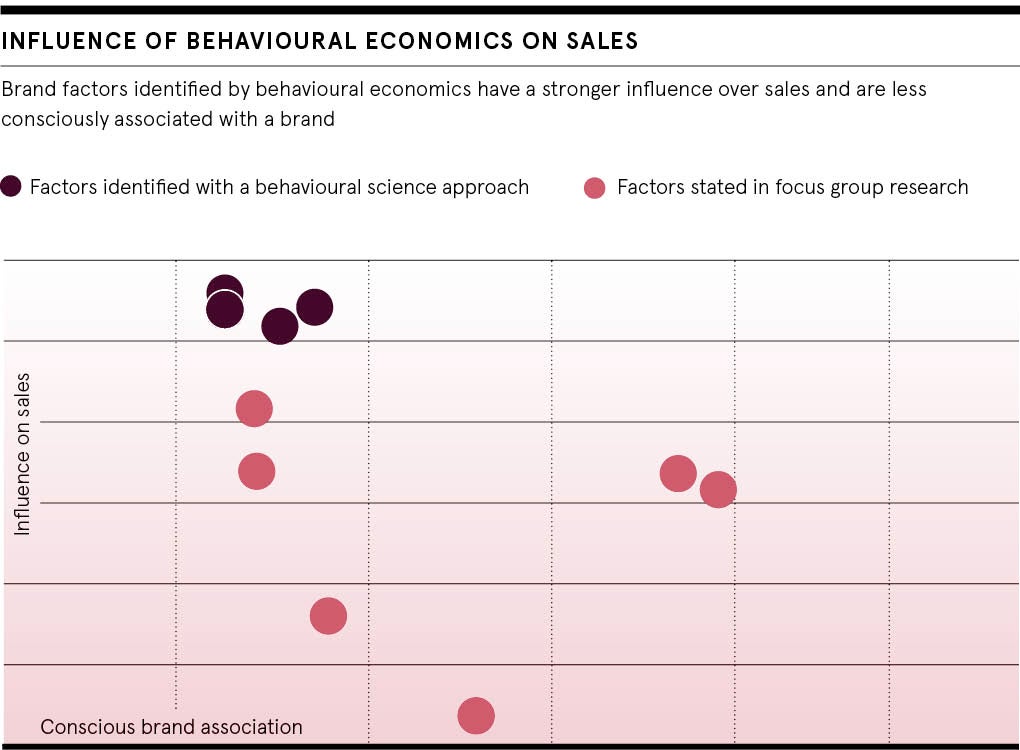Data is abundantly available in most businesses, and digitisation has rapidly increased their ability to collect it. Surveys, video dairies, social listening, online behaviour tracking, the list goes on. The challenge we all face is how to turn this deluge of data into actionable insights that will help marketing departments deliver commercial success.
Success in marketing is inevitably linked to changing behaviour: businesses want people to consume more or less of something, switch to a new brand, or change the way they think about a subject. But we can only change behaviour if we know what is motivating it. Many businesses don’t truly understand the motivations of their customers and that is why they have such a hard time influencing their behaviour.
Big data alone will not deliver the answer. While it provides powerful information on what consumers are doing, when and where, it struggles to explain why. Adjacently, traditional market research, that simply asks consumers why they do what they do, will also inevitably get the wrong answer because consumers don’t know.
Behavioural science-based market research gets closer to real consumer behaviour than any other approach and reveals the motivations driving current habits, so brands can influence and change them.

Sales impact
In this sphere, Emotional Logic is one of the leading providers of behavioural science-based consumer research and has conducted a study with a major UK retailer that proved simply asking consumers is ineffective.
A behavioural economics-based methodology was used alongside traditional focus group research to identify the drivers of loyalty, in this case, repeat purchasing transactions. In focus groups, consumers explained why they repeatedly came back to the retailer, citing factors such as value for money and staff expertise.
The behavioural science method then identified several other factors around how consumers felt during and after the transaction. When the identified factors were tracked against repeat purchasing, all aspects that consumers had said they wanted in the focus groups showed a much lower link with sales than the factors identified using a behavioural science approach.
On average, factors derived through behavioural science had a 44 per cent stronger impact on repeat sales transactions, proving this approach gets us closer to real behaviour and results.
A behavioural scientist understands how consumers process information and subsequently how they behave and react. This is different to how consumers think they react.
Consumers think they want an orderly and simple product shelf, yet eye-tracking reveals they spend more time engaging with the messy shelf that has not been restocked properly. They say they are worried about plastic packaging, but then overwhelmingly choose the plastic bottle in choice experiments.
Applying a behavioural science approach means to stop simply believing what consumers are saying and to research for evidence of what is really driving their behaviour.
Emotional Logic has worked with clients, such as Jaguar Land Rover, Unilever and the British Heart Foundation, to cut through the noise of consumer opinions and find the root cause of the behavioural shift they wish to achieve.
Beyond system 1
For many people, behavioural science is synonymous with system 1 thinking.
System 1 thinking, which is used to describe the fast, automatic and often unconscious reactions humans have, is the current buzzword of market research with many agencies suddenly adding implicit research tools to their suite. There is a real danger that after years of focus on mostly rational or system 2 thinking, we now go too far the other way and think unconscious emotions and system 1 thinking are the answer to everything. Actually, they aren’t.
The conscious mind still has a say; you can use emotive advertising and exciting packaging to ramp up consumer desire, but if the conscious mind says it’s too expensive you will still lose the sale.
Human beings actually switch seamlessly between unconscious, emotional gut reactions of system 1 and the logical step-by-step thinking of system 2. Both are essential for decision-making. So instead of focusing on one or the other, what about understanding how they work together to reach a decision? For more than a decade Emotional Logic’s research delivery has achieved just that.
Each of Emotional Logic’s research solutions combines traditional research techniques with tools from neuroscience and psychology to ensure both system 1 and system 2 factors are accurately measured and their impact on behaviour is quantified. This approach has won multiple awards for the company and is not only more effective as it delivers a more accurate
picture of real decision-making, but it is also safer as looking at system 1 in isolation can deliver misleading results.

Actionable results
When it comes to system 1 measurements, hardly a week goes by without another new research methodology being launched. Eye-tracking, biometric measures, implicit testing; none are new, but all are redeveloped continuously.
One of the challenges many organisations face is keeping up to speed with who is the best provider and to assess which tool is best fit for what purpose. And then there are the reports. Many of us have seen the overcomplicated eye-tracking report showing 30 different “interesting” measurements only then to be stumped by what to do with the results.
Emotional Logic is methodologically neutral and experienced in the full range of established and new tools available. Testing more than 30 tools across product categories and international markets has resulted in solutions that have been honed for brand development, packaging testing, digital user experience, segmentation, communication development, in-store shopper studies and customer satisfaction. The reports you get deliver a clear set of a few key metrics which indicate direct actions.
In this research approach you find the key to achieving a stronger influence on consumer behaviour by stopping believing what consumers are telling you and actually finding out what is really driving their actions.
For more information please visit www.emotional-logic.co.uk

Sales impact
Beyond system 1

